Health Care > EXAM > ACLS Certification Exam: Questions & Answers. 100% Verified: Latest Updated A Score Solution. (All)
ACLS Certification Exam: Questions & Answers. 100% Verified: Latest Updated A Score Solution.
Document Content and Description Below
Any organized rhythm without a pulse is defined as pulseless electrical activity (PEA). (Ans- True Synchronized cardioversion is appropriate for treating an unknown wide complex tachycardia. (A... ns- True The aorta is the wall that separates the ventricles of the heart. (Ans- False The most effective treatment for ventricular fibrillation is defibrillation. (Ans- True An individual should be cleared-Ñ prior to a shock only when convenient. (Ans- False PEA and asystole are considered non-shockable rhythms and follow the same ACLS algorithm. (Ans- True Transcutaneous pacing should be used on an individual with bradycardia and inadequate perfusion if atropine is ineffective and the individual is exhibiting severe symptoms. (Ans- True Low blood pressure may be an indication of hemodynamic instability. (Ans- True Urgent defibrillation is essential for survival in the management of acute strokes. (Ans- False Fibrinolytic therapy within three hours (in some cases 4.5 hours) of first onset of symptoms is the standard when treating ischemic stroke. (Ans- True 100% oxygen is acceptable for early intervention but not for extended periods of time. (Ans- True In a suspected acute stroke individual, you must always immediately obtain IV access. (Ans- False There is never a pulse associated with VF; therefore, you should follow the PEA algorithm with individuals in VF. (Ans- False If the AED advises no shock, you should still defibrillate because defibrillation often restarts the heart with no pulse. (Ans- False If transcutaneous pacing fails, there are no other options to consider. (Ans- False Medication is the only treatment for an unstable tachycardic individual. (Ans- False For an individiual in respiratory arrest with a pulse, how often should they be ventilated? A) Give two breaths every 8 to 9 seconds, or 13 to 15 breaths per minute. B) Give one breath every 5 to 6 seconds, or 10 to 12 breaths per minute. C) Give one breath every 3 to 4 seconds, or 15 to 20 breaths per minute. D) Give one breath every 8 to 9 seconds, or 6 to 8 breaths per minute. (Ans- B) Give one breath every 5 to 6 seconds, or 10 to 12 breaths per minute. Which item is NOT a basic airway skill? A) Placement of endotracheal tube (ET tube) B) Bag-mask ventilation C) Jaw-thrust maneuver without head extension D) Head-tilt-chin-lift maneuver (Ans- A) Placement of endotracheal tube (ET tube) [Show More]
Last updated: 2 years ago
Preview 1 out of 17 pages
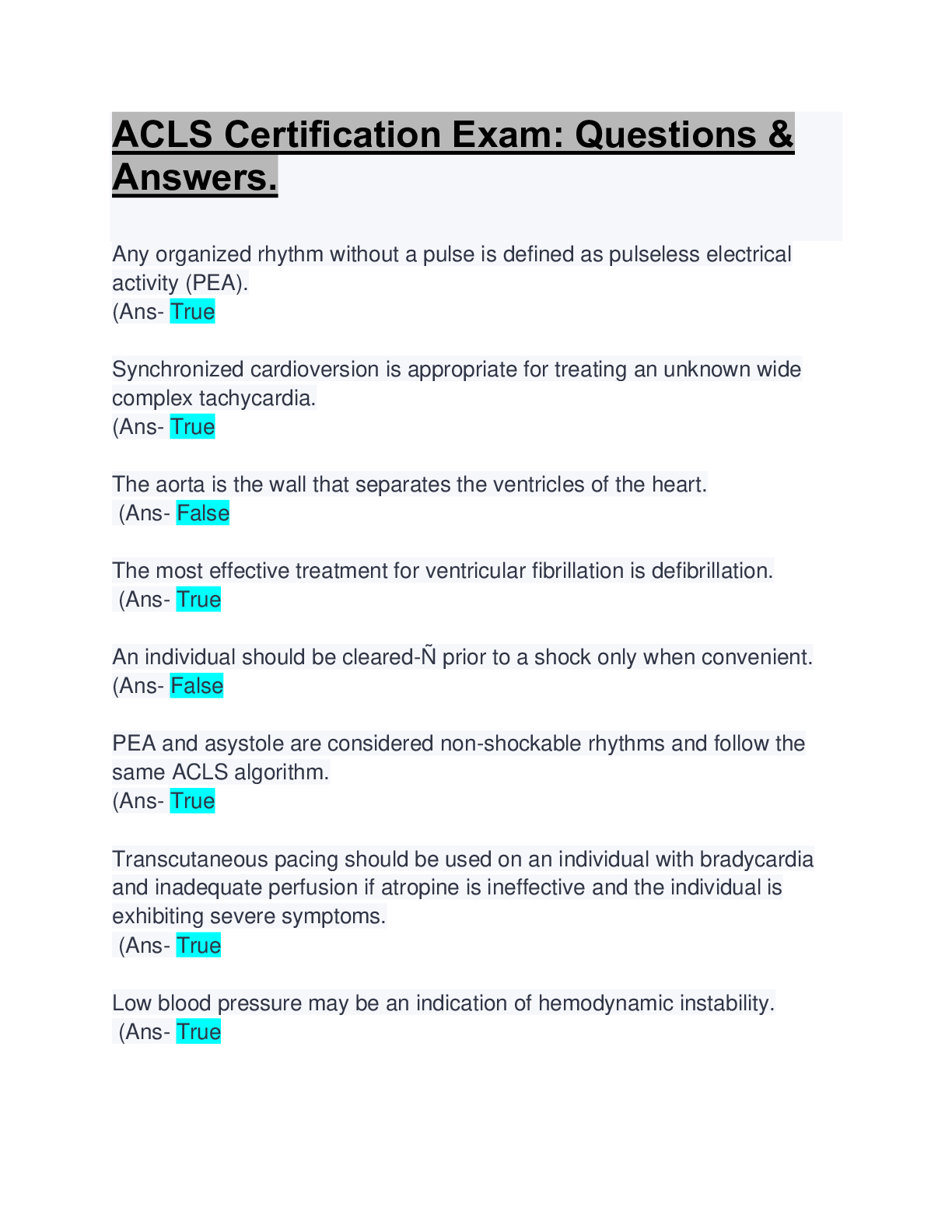
Buy this document to get the full access instantly
Instant Download Access after purchase
Buy NowInstant download
We Accept:

Reviews( 0 )
$9.00
Can't find what you want? Try our AI powered Search
Document information
Connected school, study & course
About the document
Uploaded On
Feb 22, 2023
Number of pages
17
Written in
Additional information
This document has been written for:
Uploaded
Feb 22, 2023
Downloads
0
Views
99



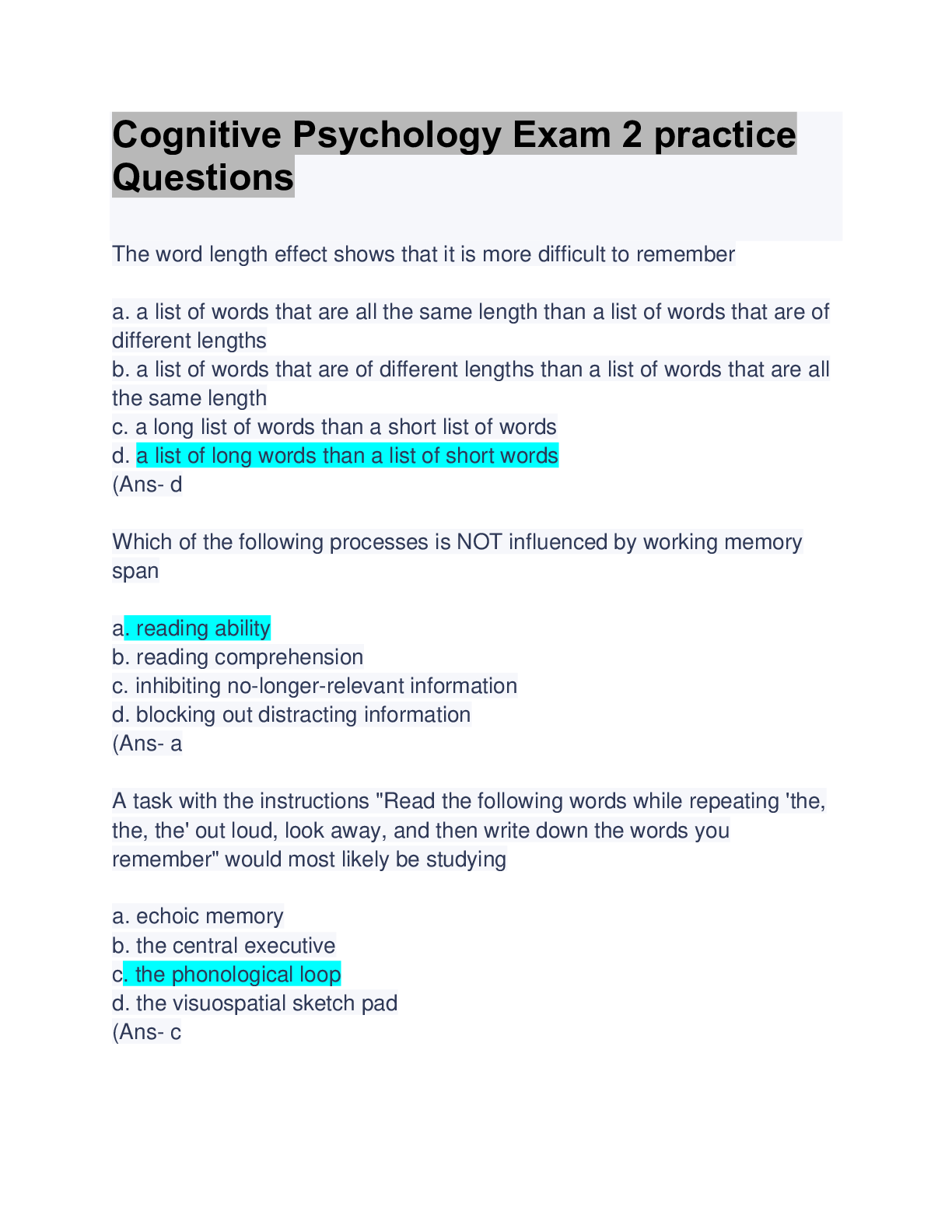
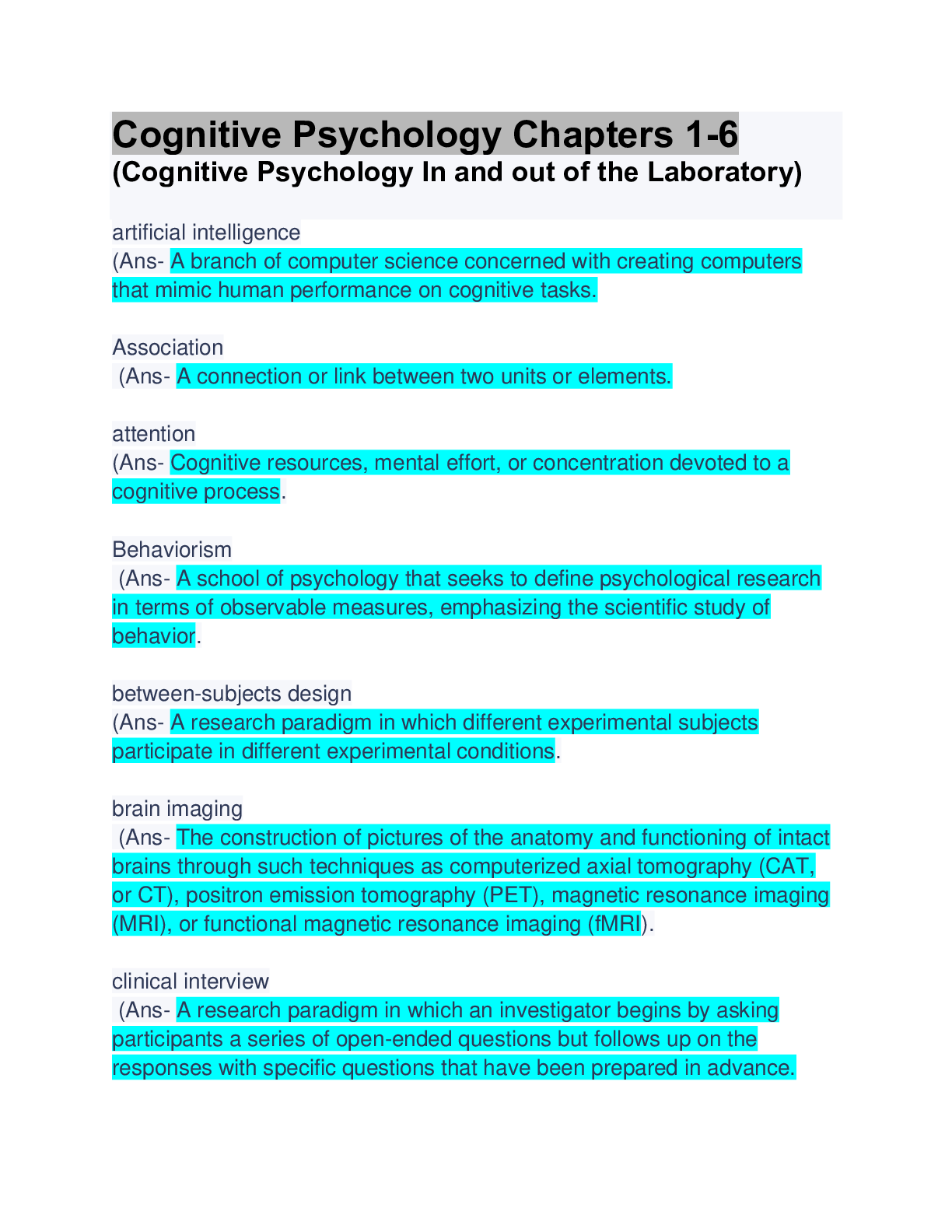




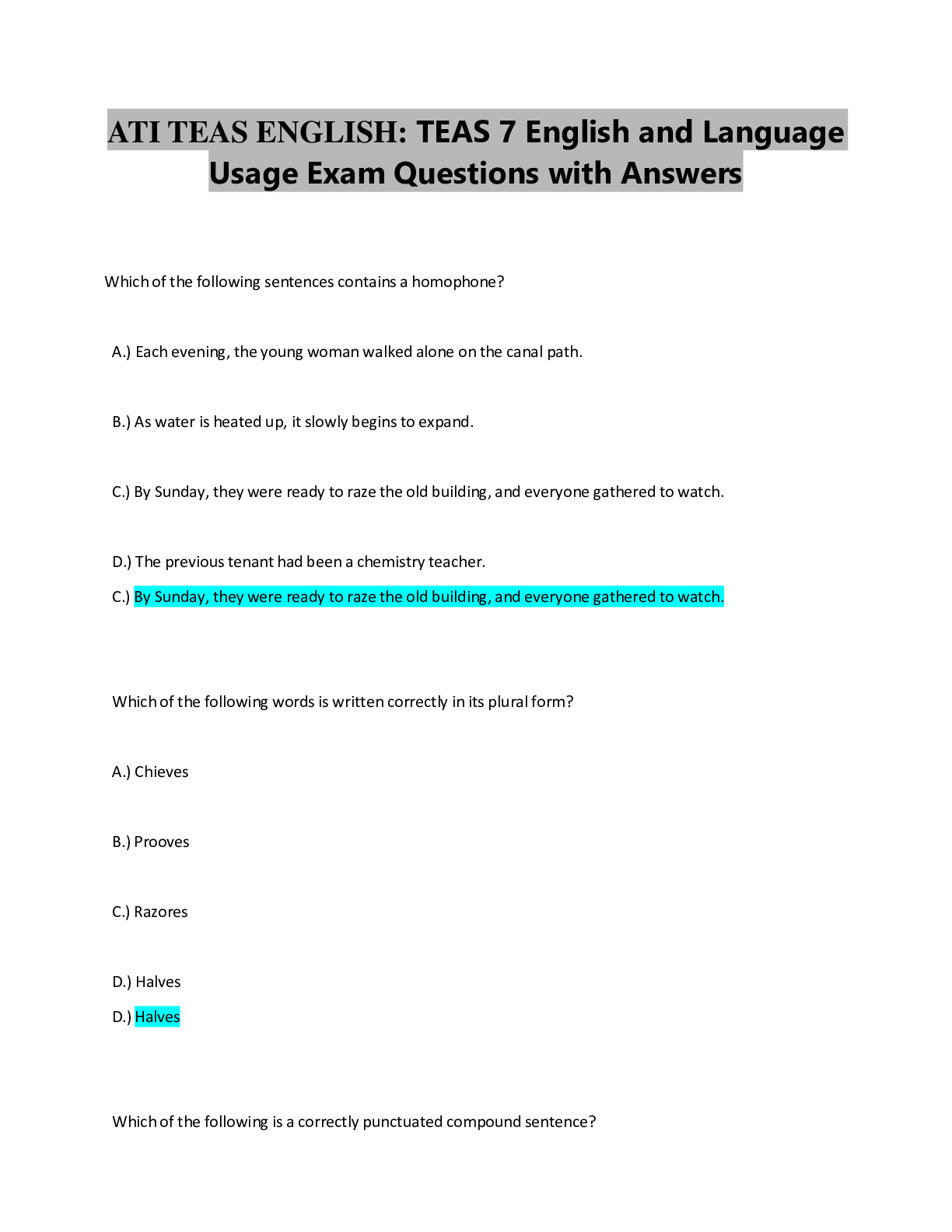







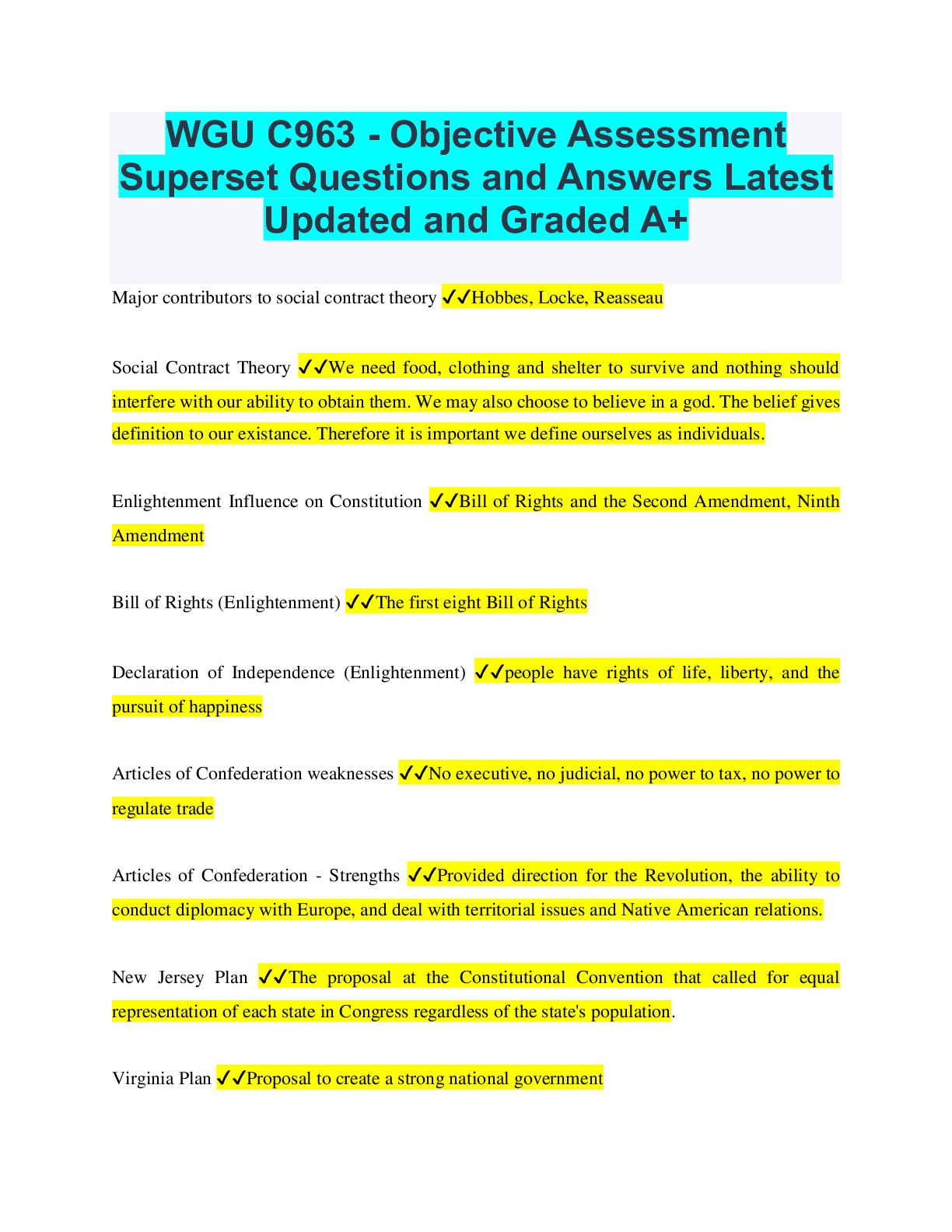
.png)


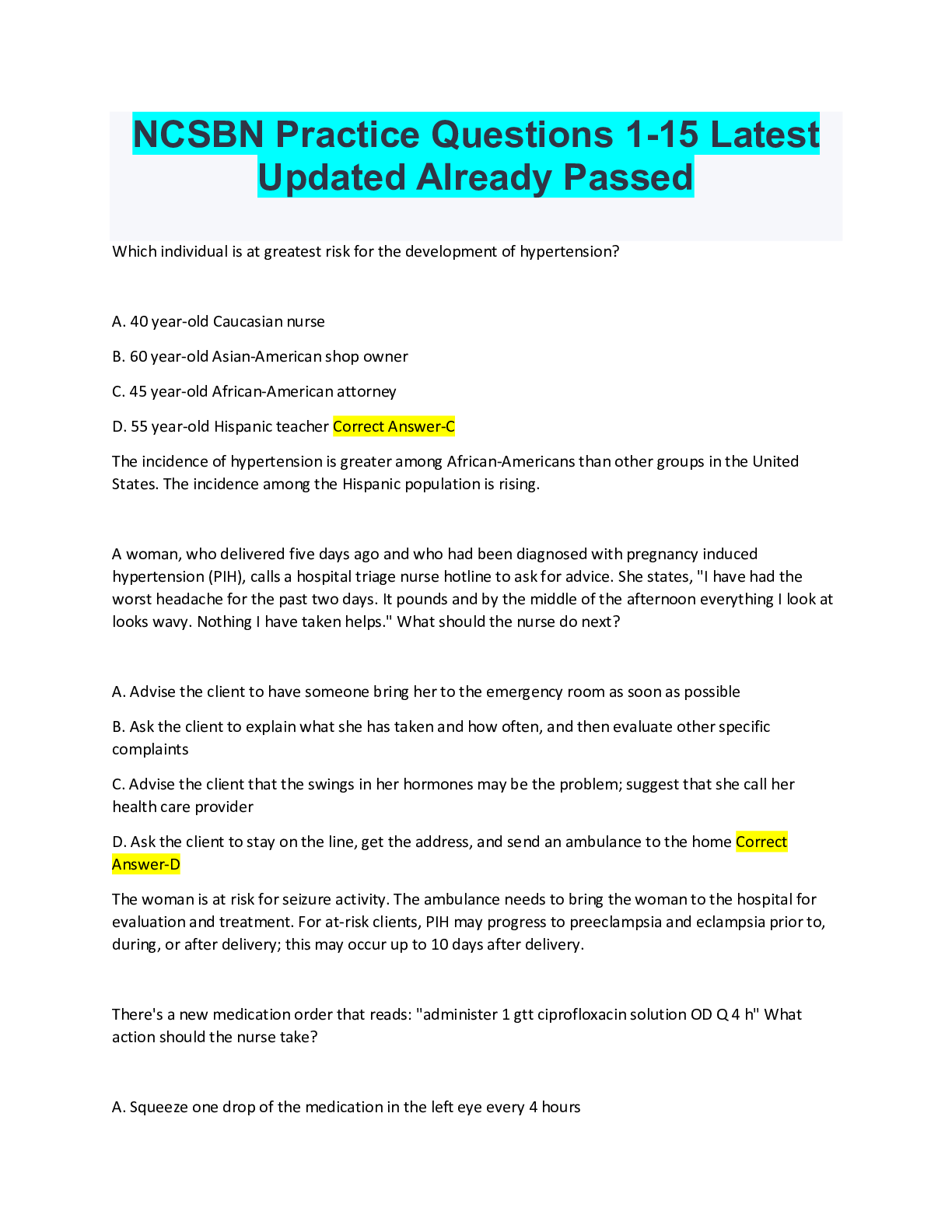

.png)

